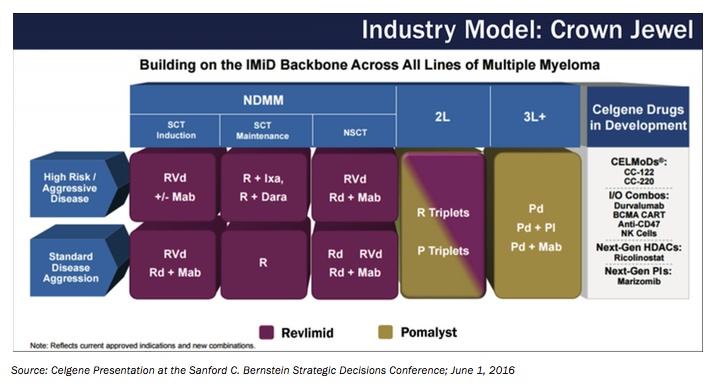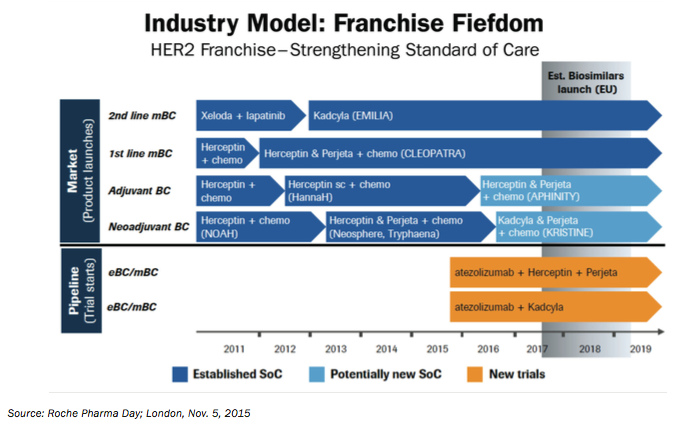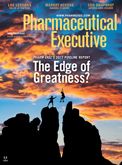8 Winning Commercial Portfolio Strategies
Pharmaceutical Executive
Biopharma companies are increasingly leveraging product portfolios to own and dominate strategically important therapeutic areas.
For decades, pharmaceutical companies focused on their research product portfolios to optimize the right mix of drug candidates for successful clinical development. However, it has only been in the last 15 years that organizations have begun optimizing and emphasizing their commercial product portfolios. This concentration on commercial portfolios has been highlighted by the number of companies that are increasingly bulking up and focusing in certain therapeutic product portfolio areas while shedding some long-standing assets in others.
For example, Novartis recently obtained most of GlaxoSmithKline’s oncology products while sending GSK its vaccine business (excluding influenza products) and creating a consumer healthcare joint venture. According to Novartis CEO Joseph Jimenez, “The completion of the GSK transactions focuses Novartis, and further establishes our leading positions in key growing business segments.”
As a result of the transaction, GSK becomes the world’s leading vaccine manufacturer and a more focused consumer healthcare products player. “We will now be focused on rapidly implementing our integration plans to realize the growth and synergy opportunities we see in the new Consumer Healthcare and Vaccines businesses,” stated GSK CEO Andrew Witty.
Similarly, in 2015, GSK obtained Bristol-Myers Squibb’s HIV pipeline, effectively ending nearly three decades of BMS HIV research while significantly enhancing GSK’s HIV pipeline at ViiV Healthcare, an HIV business largely owned by GSK. This transaction followed BMS’s divesture of its long-time diabetes business by selling its stake in the Global Diabetes Alliance to AstraZeneca. These actions have enabled BMS to concentrate on developing and acquiring numerous assets and capabilities in immuno-oncology (IO), where it has become the world’s leader.
These are just a few of the numerous examples of companies seeking to dominate therapeutic areas or “Strategically-Owned Areas.” SOAs can be therapeutic portfolios or geographic areas; collections of similar therapeutic functions, chemical pathways (e.g., checkpoint inhibitor agents for cancer or HER-2 pathway agents) or mechanisms of action; business segments or other unique market niches.
Over the past 15 years, market leaders have focused on winning SOAs by using clearly defined product portfolio strategies. There are two main reasons for this intensive and highly selective portfolio-based approach. The pharma industry’s major markets transitioned from the growth or Commercial Stage (“Pharma 1.0”) of its lifecycle to the mature or Competitive Stage (“Pharma 2.0”). In this highly competitive era, companies cannot be general mass marketers and seek to conquer the world; instead, they must make strategic decisions and focus on prioritized areas they can win. These approaches are analogous to the board game Risk, where players concentrate their forces on conquering a continent like Australia or South America to own their own territory from which they can grow stronger and attack other geographic areas.
In addition, in Pharma 2.0, companies not only compete at the brand level as they did in Pharma 1.0 but also at the franchise, portfolio, and corporate levels, a concept called “Multi-Level Competition.” Competing with a portfolio of products in a specific therapeutic category offers companies many competitive advantages vs. competing only with a single brand: cost and operating efficiencies; co-positioning and co-promotion opportunities; pricing and contracting options; product combinations, either company-specific regimens or fixed-dosed combinations; enhanced corporate reputation and branding; better and deeper stakeholder relationships and opportunities; greater licensing, clinical and business development offerings. In fact, a 2011 Oliver Wendell research study revealed that focused pharma category leaders had 5.5 times greater revenue, twice the licensing deals, and 70% greater product development success rates.
Companies have utilized numerous portfolio approaches to help them win market share and SOAs. Here are eight examples of focused commercial portfolio strategies:
Crown Jewel: Celgene has become the world’s leader in the treatment of multiple myeloma (MM) by promoting immunomodulatory drugs (IMiDs) as the backbone of MM cancer therapy. Importantly, Celgene highlights one of its three marketed IMiDs, Revlimid, as first- and second-line backbone therapy along with other non-IMiD combination agents. The company positions its two other marketed IMiDs, Thalimid and, recently, Pomalyst-despite being newer and potentially more potent than Revlimid-as secondary or tertiary choices. This approach is known as a “Crown Jewel” portfolio strategy, since the company has clearly anointed the blockbuster Revlimid as the primary option for physicians. See chart below.

Crown Prince: In contrast, Novo Nordisk anoints a new product leader every few years in its world-leading diabetes portfolio. For example, Novo’s GLP-1 agent Victoza has been the company’s focus since its pre-launch and ultimate U.S. launch in 2010 (EU in 2009). The drug was a billion-dollar blockbuster in its first sales year and has grown to nearly $8 billion in global sales with a GLP-1 market share exceeding 60%. However, the drug has recently faced intense pressure from competitive agents, especially from Eli Lilly’s Trulicity and payers, including an exclusion from the CVS/Express Scripts US formulary. As a result, Novo has already anointed it next Crown Prince, the once-daily oral GLP-1 and Victoza follow-up semaglutide. In fact, Novo has announced two head-to-head trials of semaglutide vs. both Victoza and its SGLT-2 rival Jardiance. Novo is hoping semaglutide will demonstrate efficacy superiority over the injectable Victoza and oral SGLT-2 agents. In fact, recent preliminary data from the SUSTAIN 6 Phase III trial demonstrated that the next-generation GLP-1 semaglutide reduced major cardiovascular risk by 26%, a higher rate than that seen by either Victoza or oral rival Jardiance in their respective CV trials.
All the King’s MOA: GSK has long been the global leader in respiratory, typically owning over a third of the market. While GSK pursued a Crown Jewel strategy with its $6 billion/year Advair/Seretide Diskus, the company has been transitioning to an “All the King’s MOA” strategy as Advair faces greater generic competition. At one point, GSK was pursuing 11 different marketed or pipeline agents with different mechanisms of action. In 2015, GSK offered four products that generated 90% of its respiratory sales; by 2020, the company plans to have nine different products generating roughly the same 90% of sales despite generic threats. Similarly, GSK has the world’s broadest portfolio of vaccines, including over 25 pediatric, adolescent, adults/travelers, and elderly vaccines. The company covers greater than 90% of the US/EU universal vaccine recommendations and provides nearly one billion vaccines annually.
Sovereign Guidelines: To offset GSK’s dominance in respiratory, Novartis adopted a “Sovereign Guidelines Strategy” in which it strategically positioned their key chronic obstructive pulmonary disease products Onbrez, Seebri, and Ultripro by the 2013 GOLD Guidelines. Other companies have sought to position their therapeutic area products by clinical guidelines.
Franchise Fiefdoms: Roche has been the dominant player in oncology by leveraging a “Franchise Fiefdoms Strategy.” The company establishes a beachhead in a strategic space such as the HER2 pathway with its agent Herceptin, establishes a new standard of care for HER2+ metastatic breast cancer patients, and then grows the fiefdom by using new indications, formulations, agents, and combinations. Roche’s current HER2 Franchise Fiefdom for metastatic, neoadjuvant, and early breast cancer includes and combines Herceptin, recent HER2 agents Perjeta and Kadcyla, and the new PD-L1 agent Tecentriq. Roche has applied this winning portfolio to several other cancer spaces, such as anti-CD-20 (Rituxan, MabThera), angiogenesis (Avastin), and recently immunotherapy (Tecentriq and many other agents). See chart below.

Royal Halo: To compete with Roche in oncology, BMS has sought to carve out part of the oncology space by using a “Royal Halo Strategy.” The company has strategically helped to create and own the IO space with a vast portfolio of immunotherapy products. BMS has IO products Yervoy and Opdivo on the market and is currently pursuing numerous other IO agents, including effector and non-effector T-cells and natural killer (NK) cells mechanisms as well as tumor cell targeted pathways.
Importantly, by seeking to own the IO space, BMS does not have to focus on any one product for success but rather its overall IO portfolio. This is especially important when one or more of its IO agents fails an important trial, as happened recently when its CheckMate-026 study failed to show a benefit for Opdivo in first-line treatment of advanced non-small cell lung cancer.
Combination King: Gilead Sciences has been the leader in using fixed-dosed combinations of its anti-viral portfolio products to win. The company launched Stribild, a four-ingredient single tablet regimen for HIV and recently combined Solvadi, which had been the industry’s best-launched product, with a second agent, ledipasvir, to form Harvoni, a multi-billion dollar single-tablet regimen for hepatitis C patients.
Jack of All Trades:Humira is the poster child for the “Jack of All Trades” or indications strategy. AbbVie has essentially created a “portfolio in a pill” by obtaining 10 indications for the immunology agent Humira. By pursuing these and other indications, AbbVie has strategically developed the world’s best-selling drug, with global sales exceeding $13 billion.
These are just a few of the myriad of commercial portfolio strategies that pharmaceutical firms can use to win. Most companies identify and execute their best portfolio strategy in a series of steps. They usually start with a “Commercial Portfolio Strategies Brainstorming Workshop” to brainstorm, identify, and prioritize two to four potential portfolio strategies that might work for their specific situation. Then they conduct a “Commercial Portfolio Strategy Competitive Simulation” to simulate their and their competitors’ portfolio strategies in order to pressure-test and select the winning portfolio strategy. Lastly, they incorporate the preferred portfolio strategy into their existing portfolio, franchise, and brand plans to ensure internal alignment and successful execution.
Stan Bernard, a member of Pharm Exec’s Editorial Advisory Board, is President of Bernard Associates LLC, a global pharmaceutical industry competition consulting firm. He can be reached at SBernardMD@BernardAssociatesLLC.com

The Misinformation Maze: Navigating Public Health in the Digital Age
March 11th 2025Jennifer Butler, chief commercial officer of Pleio, discusses misinformation's threat to public health, where patients are turning for trustworthy health information, the industry's pivot to peer-to-patient strategies to educate patients, and more.
Navigating Distrust: Pharma in the Age of Social Media
February 18th 2025Ian Baer, Founder and CEO of Sooth, discusses how the growing distrust in social media will impact industry marketing strategies and the relationships between pharmaceutical companies and the patients they aim to serve. He also explains dark social, how to combat misinformation, closing the trust gap, and more.